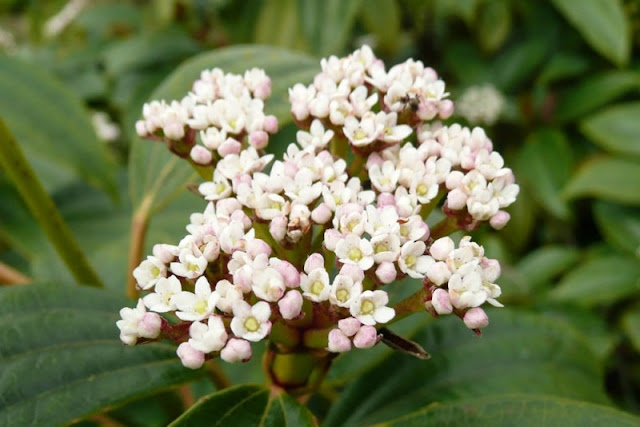Viburnums are a joy to grow
because they are so trouble free and they offer so much. Most bear while
flowers in mid or late spring, some of them are very fragrant; these are
followed by berries many of which are showy and either red, black or yellow. In
addition may have colored foliage I fall, some of it quite striking. Moreover
size are varies, so select the right one for the site.
Among the best fragrant viburnums
are Burkwood viburnum “Viburnum burkwoodii” whose flowers are cluserts 3 inch
pinkish white balls. Fragrant snowball (v. carlcephalum) is same and normally
grows to 9 feet. Korean spice viburnum “V. carlesii” is the most fragrant of
all, is only 5 feet tall, and its variety Compacta even smaller. All are hardy
to zone 5. Southeerners favor sweet viburnum “V. odoratissimum” which normally
grows to 10 feet and is hardy to zone 8.
Well, other attractive viburmums
include double file viburnum (V. plicatum tomentosum) a tall and broadly
spreading shrub with wide flowers clusters atop the branches (in the variety “Mariesi”
They are very speciall showy. Linden viburnum “V. dilatatum” has very showy red
berries as well as rust red fall foliage and grows to 9 feet. Bothe are hardy
to zone 5. Moreover American cranberry bush “V. Irilobum” has flat flower
clusters and red berries that are edible. It is hardy to zone 3.
Though not particular viburnums
appreciate a good, light, moist loam. They are shallow rooted and appreciate a
mulch to keep roots moist and protected in winter. All will tolerate some
shade, though full sun produces the best flowers and fruits. Viburnums can be
propagated by layering. They rarely need pruning, though old plants can be
thinned at the base. Spring blooming species bloom on old wood, so prune the
tops only after flowering if needed. Source: CP




